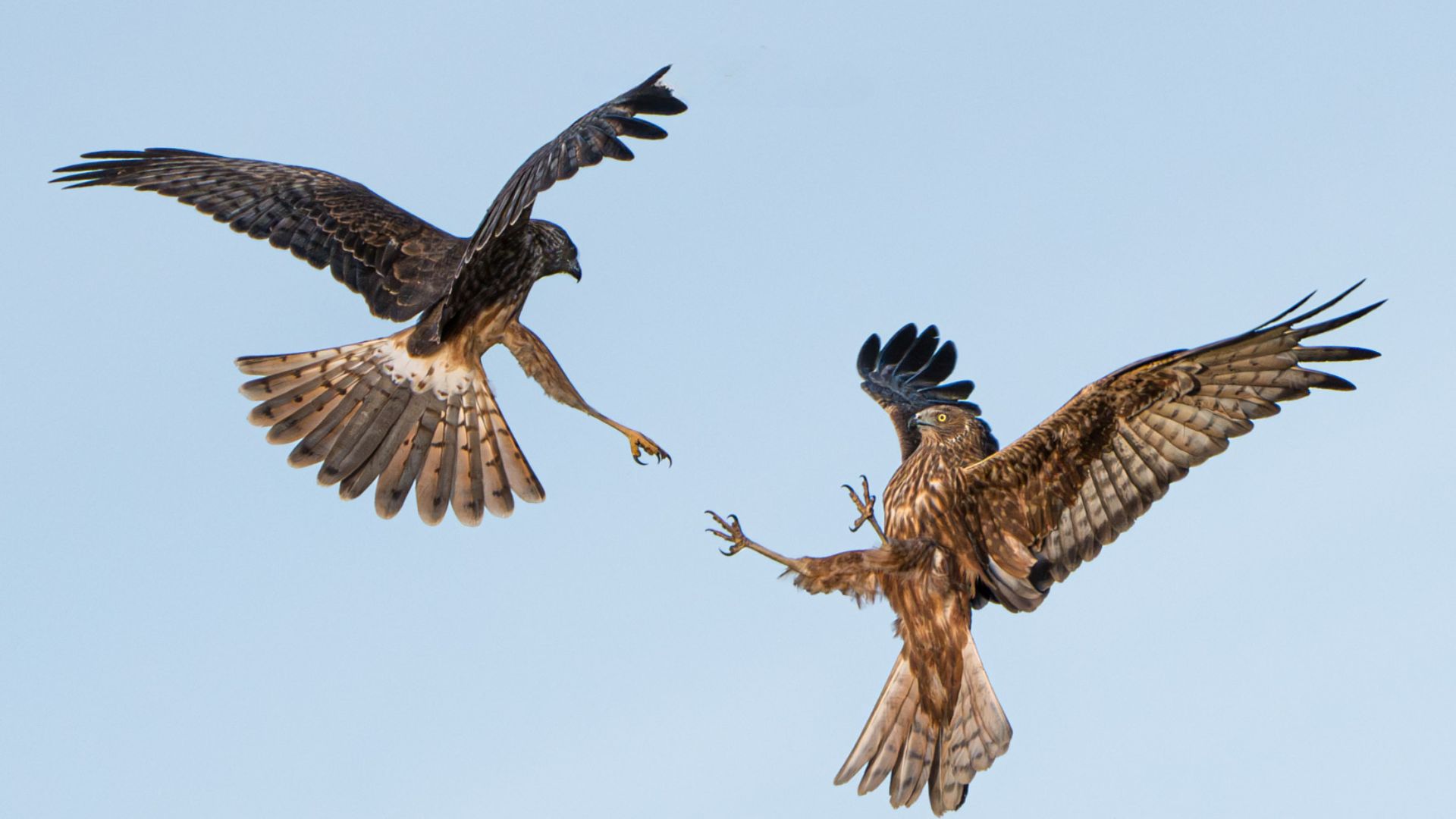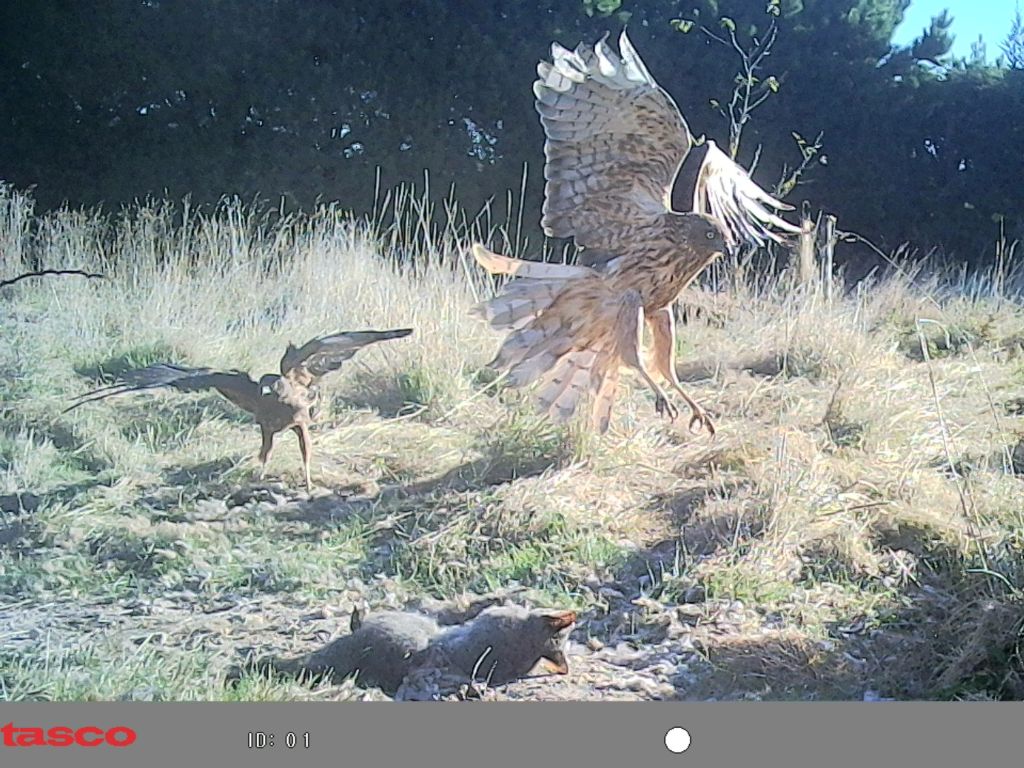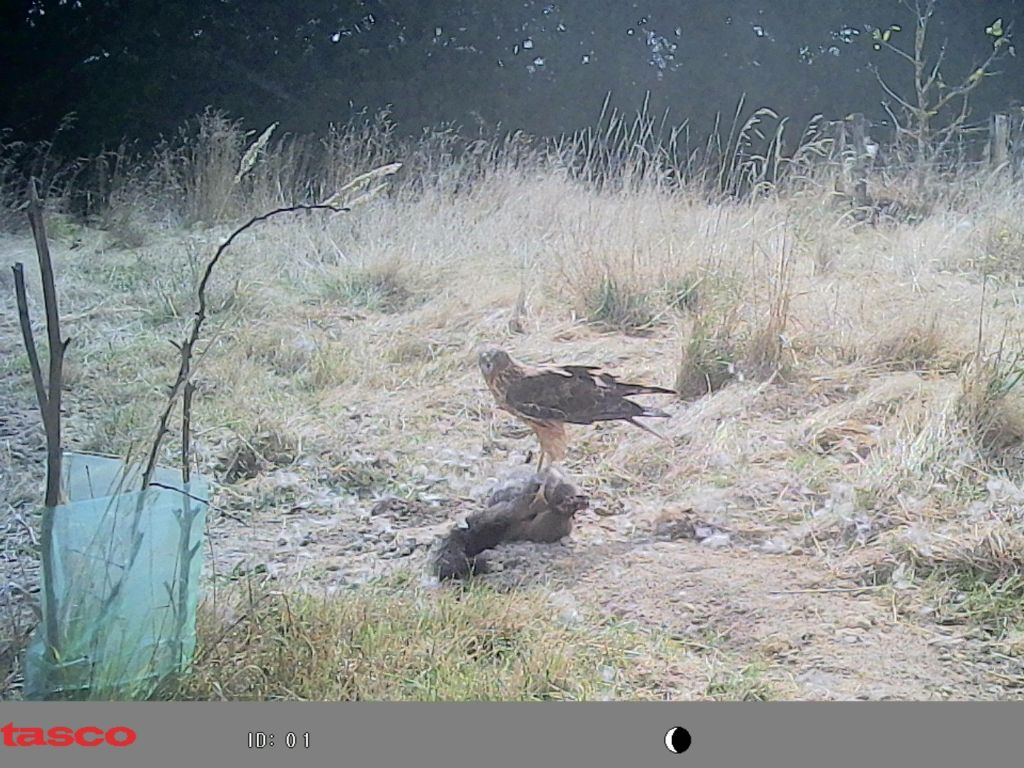Most people put out bird feeders to attract tuneful songbirds. Not Hamish Trolove. His lifestyle block “bird feeder” caters to a different crowd – large, razor-beaked raptors with sharp talons. Kāhu (Australasian swamp harrier) are messy eaters and have the table manners and social skills of a two-year-old, but have become unexpected helpers in possum disposal.

It started when Hamish Trolove left a freshly trapped possum outside his back door. As he did most mornings, he planned to bury it in a large hole on his north Canterbury lifestyle property, but first, he popped indoors to record his catch.
“Five minutes later, I stepped out into a storm of possum fur and wings.”
A kāhu (Australasian swamp harrier) had got there first and was messily enjoying the free meal.
“It was welcome to it, but just not right at my back door,” Hamish says. An idea struck. If the kāhu wanted fresh possum, why not let them help with his trap cleanup?
“Better for me because I don’t need to dig so many holes and better for the birds because it keeps them safely off the road,” he says.
Kāhu are large brown native birds of prey, likely seen slowly flying with their large wings held in a distinctive V-shape while hunting.

While they prey upon small to medium-sized birds, insects, lizards, and frogs, road-kill carrion possums, rabbits, and hedgehogs make up a large part of their diet.
A bird feeder with a difference

Hamish’s unorthodox bird feeder took off. He considered building a platform for the possums but was soon dissuaded from the idea after discovering the dining preferences of kāhu.
“Almost the first thing they do after I’ve put a possum out for them is to move it – maybe they have their own ideas about how a meal should be laid out. Feng shui for harriers?
“Most days, I have to spend a little time searching for what they’ve done with the carcass so I can bury it. Generally, it’s a case of following the trail of fur. I’d prefer if they’d just drop it in the ready-made hole once they’re done with it.”
Since starting the bird feeder over a year ago, kāhu have helped dispose of about 120 possums. Hamish says the birds usually consume about 1.5kg off each possum, making the remains much easier to bury.
However, possums aren’t the only thing on the menu; it’s a smorgasbord of mice, rats, rabbits, and hares. Hamish has noticed rodents are a preferred meal.
“But “mouse-to-go” takeaway is definitely the most popular – portable and tasty,” he says.
A network of traps keeps the bird feeder in regular supply. Hamish credits the Flipping Timmy as the most successful and consistent of his traps.
“We never use poisons to avoid harming our guests. Likewise, the few live catches that must be dispatched do not make the harrier’s dinner table, either, because of the risk of lead contamination.”
The regulars
A trail camera confirmed two harriers were visiting the feeder.
An older and younger bird were the first regulars, but two more birds have “shacked up” and are nesting in a nearby gully.
“It’s been amazing for us to watch the adults fly shuttle runs between our bird feeder and the nest and then to see several young harriers playing in the updrafts off the river terraces.”
The trail camera also revealed an amusing record of the kāhu interactions.
“After they chase off the previous incumbent, they gorge themselves until they wander around in a stuffed stupor.

“If there is another harrier nearby, the harrier on the possum will cover it with its wings in a proprietary manner. No doubt saying, ‘It’s mine! Buzz off!’”
He’s learned that harriers don’t share. Even where there are two possums and two harriers, enough to go around.
It’s been a fascinating experience for Hamish and his family, but he has one warning: “We definitely wouldn’t suggest trying this in a suburban backyard.”

